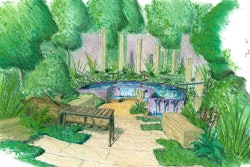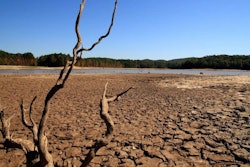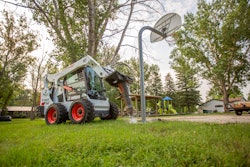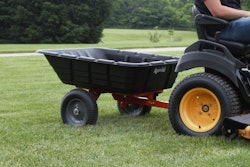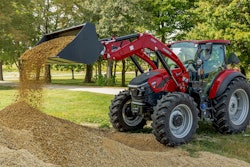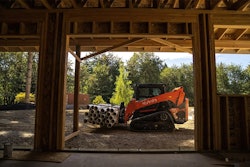 Photo: Pixabay
Photo: PixabaySpring has sprung and ’tis the season to be berry! If you have a client who wants to dabble in the world of edible landscaping but doesn’t want to go all out, why not suggest some berries as a starter?
Aside from the typical mixed berry lineup of strawberry, raspberry, blackberry and blueberry, there are some uncommon fruits out there that can pull double duty in the landscape. When the plant is doing more that just providing fruit, some customers may be more interested in testing out the investment.
From hedges to containers, any of these berries can find a home in a backyard without being too intrusive.
________________________________________________________
Top Hat Blueberry (Vaccinium x ‘Top Hat’)
A cross between highbush and lowbush species of blueberry, Top Hat is ideal for containers and offers little white blossoms in the spring, dusky blue berries in the summer and bright red foliage in the fall. It has a consistent round growth and is exceptionally cold hardy. Requires acidic, well drained-soil. Self-pollinating. Grows 1 to 2 feet tall and wide.
- USDA Hardiness Zone: 3-7
- Full sun
________________________________________________________
Fort Laramie Strawberry (Fragaria x ananassa ‘Fort Laramie’)
Another cold-hardy plant, Fort Laramie is an everbearing strawberry that produces an early summer crop and a fall crop with some berries off and on throughout the rest of the summer. It produces big, bright red berries. It can be grown in containers, as a groundcover and even trained to climb trellises and the like. Grows 6 to 8 inches tall and spreads 3 feet.
- USDA Hardiness Zone: 4-8
- Full sun
________________________________________________________
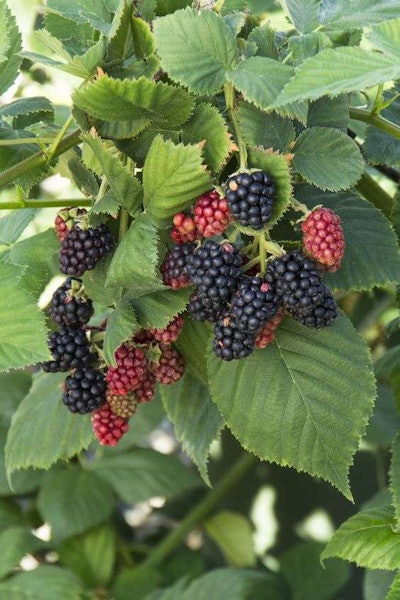 Photo: Monrovia
Photo: MonroviaBlack Satin Blackberry (Rubus subgenus Rubus Watson ‘Black Satin’)
For those wanting an area in the yard solely devoted to producing berries, Black Satin is a good choice to place in the bramble patch due to its being a thornless variety that produces a multitude of sweet and juicy berries that are suitable to eat fresh, preserved or cooked. It is heat-tolerant and rapid growing. Requires regular maintenance and pruning. Grows 5 to 6 feet long.
- USDA Hardiness Zone: 5-8
- Full sun
________________________________________________________
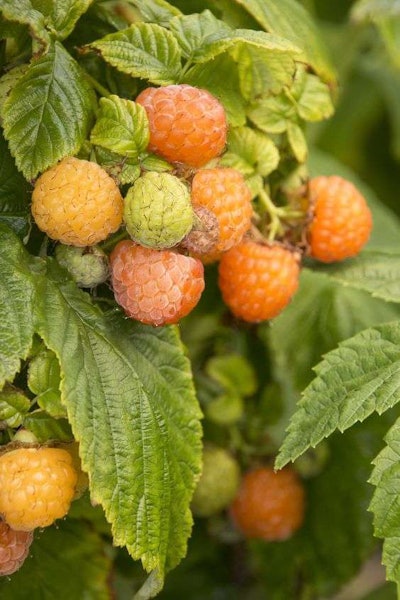 Photo: Monrovia
Photo: MonroviaFall Gold Raspberry (Rubus idaeus var. strigosus ‘Fall Gold’)
A rare variation on the typical red raspberries, “Fall Gold” offers a different color in the berry lineup and has two crops each season with the same sweetness. This plant is another climbing variety that can be used to brighten up a fence or wall with its yellow-gold berries. Attracts birds and self-fertile. Grows 4 feet tall and 3 feet wide.
- USDA Hardiness Zone: 3-8
- Full sun
________________________________________________________
Black Beauty Elderberry (Sambucus nigra ‘Gerda’ P.P. #12,305, C.B.R. #2,663)
If looking for dramatic foliage to make up a hedgerow, Black Beauty is the plant for you. Smoky purple, blackish leaves contrast with large, pink flowers in the summer. This berry producer can please both your client and the birds with its fall fruit. Deer-resistant and thrives in most soils. Grows up to 10 feet tall.
- USDA Hardiness Zone: 4-7
- Partial to full sun
________________________________________________________
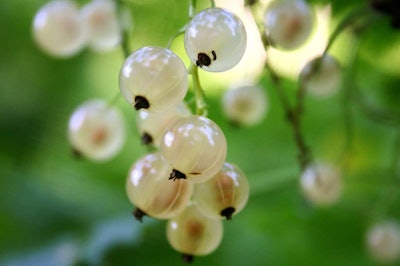 Photo: Mako/Wikipedia
Photo: Mako/WikipediaImperial White Currant (Ribes glandulosum ‘Imperial White’)
For an area with less than ideal conditions, Imperial White can fill the gap thanks to its ability to tolerate marginal soil and partial shade. Currant isn’t a commonly requested plant so availability could be an issue. It produces clusters of white berries with a pinkish tint that are known to be the sweetest of all currants. Low-maintenance. Grows 4 feet tall.
- USDA Hardiness Zone: 3-8
- Partial to full sun
________________________________________________________
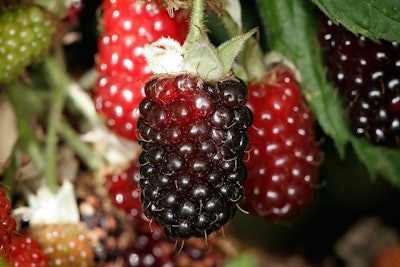 Photo: Wikipedia
Photo: WikipediaBoysenberry (Rubus ursinus x ideaus)
A hybrid of a European raspberry, an American dewberry, and a loganberry, this plant produces large, reddish fruit in the summer after the first season. This is another good berry choice for the bramble patch concept as it comes in thornless varieties as well. It can also be trained to climb, if pruned properly. Grows 5 to 6 feet tall and wide.
- USDA Hardiness Zone: 5-9
- Full sun
________________________________________________________
Koralle Lingonberry (Vaccinium vitis-idaea ‘Koralle’)
Also known as a cowberry and a whortleberry, lingonberry makes an interesting groundcover with its dark green leaves and bright red berries in late summer. Its foliage turns a metallic red color in the fall. The berries are tart and are best used in jams and sauces. Like blueberries, it grows best in acidic soil. Self-pollinating and cold-hardy. Grows 12 to 18 inches tall.
- USDA Hardiness Zone: 2-7
- Partial shade to full sun


